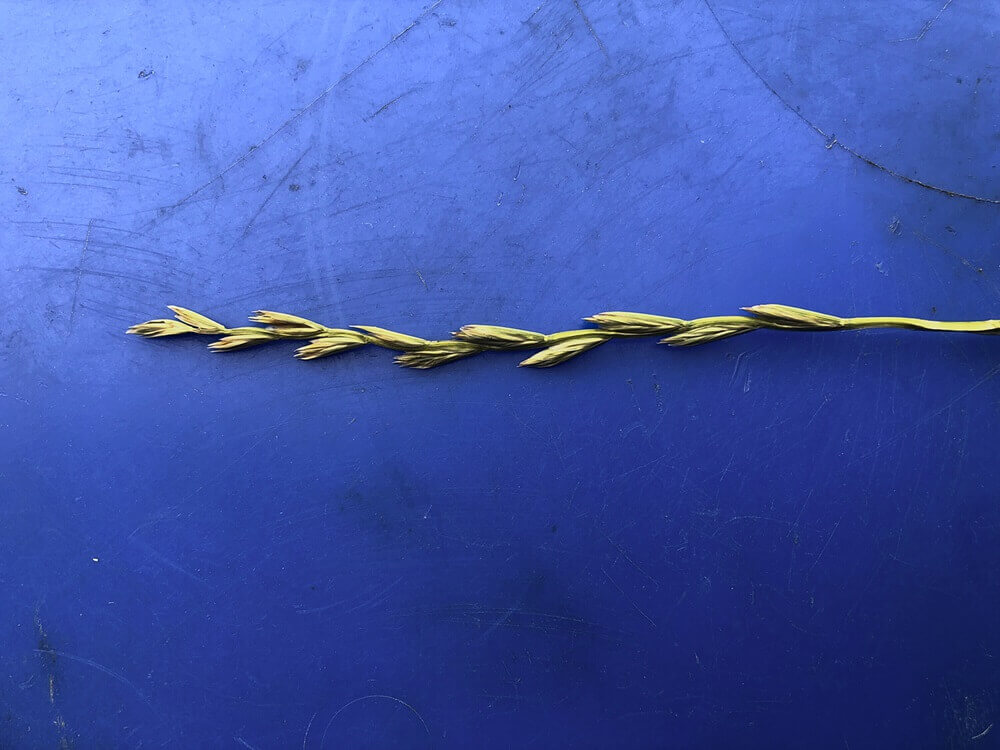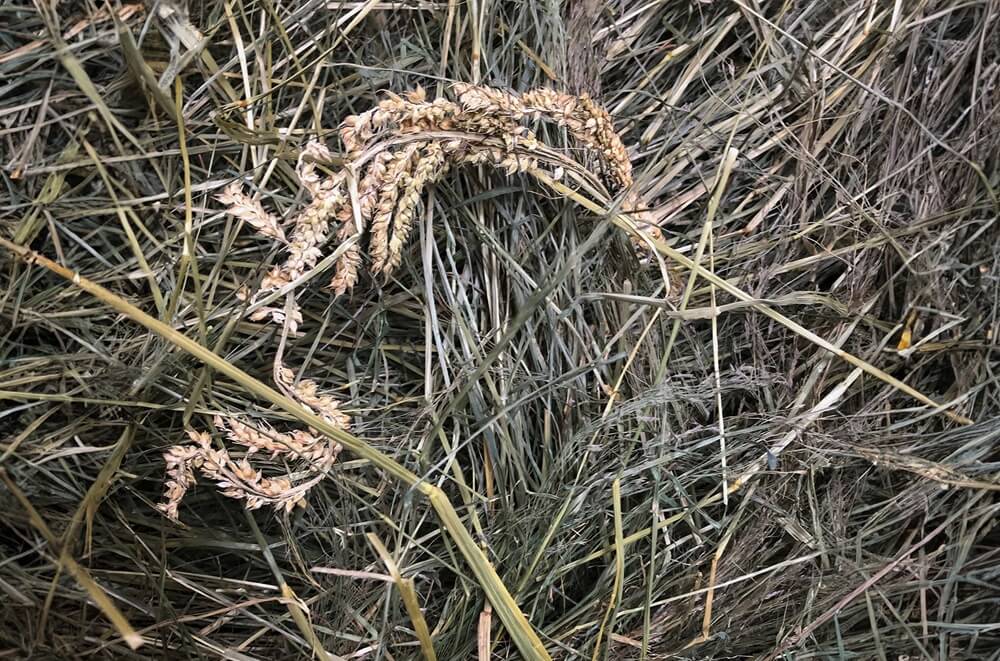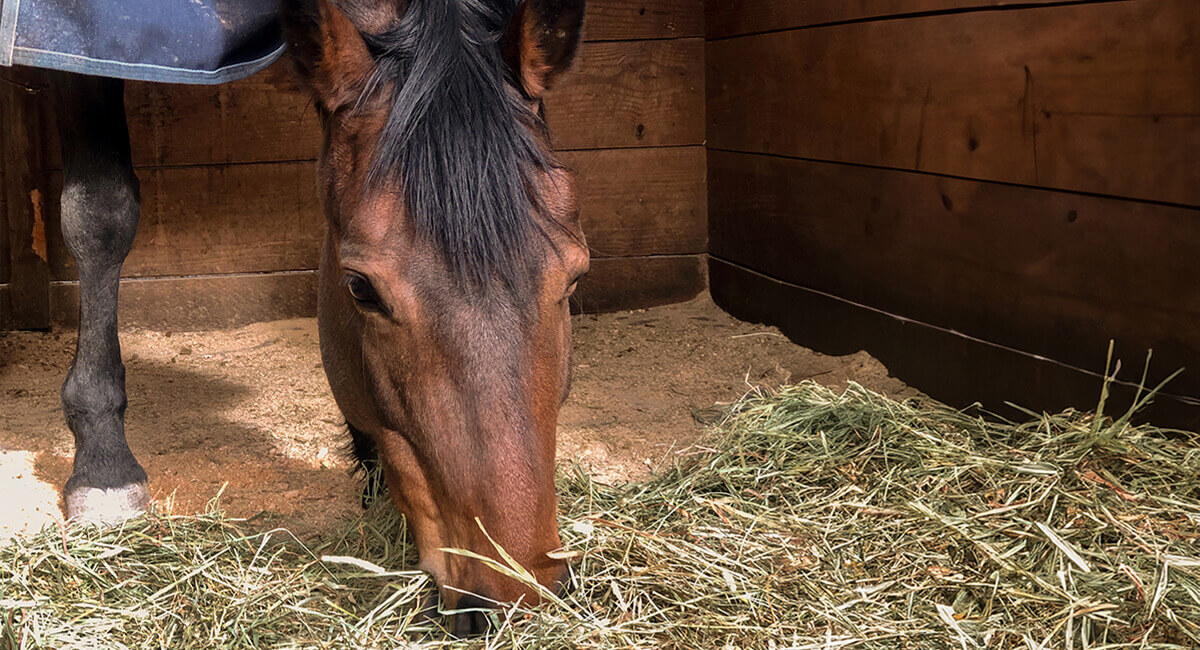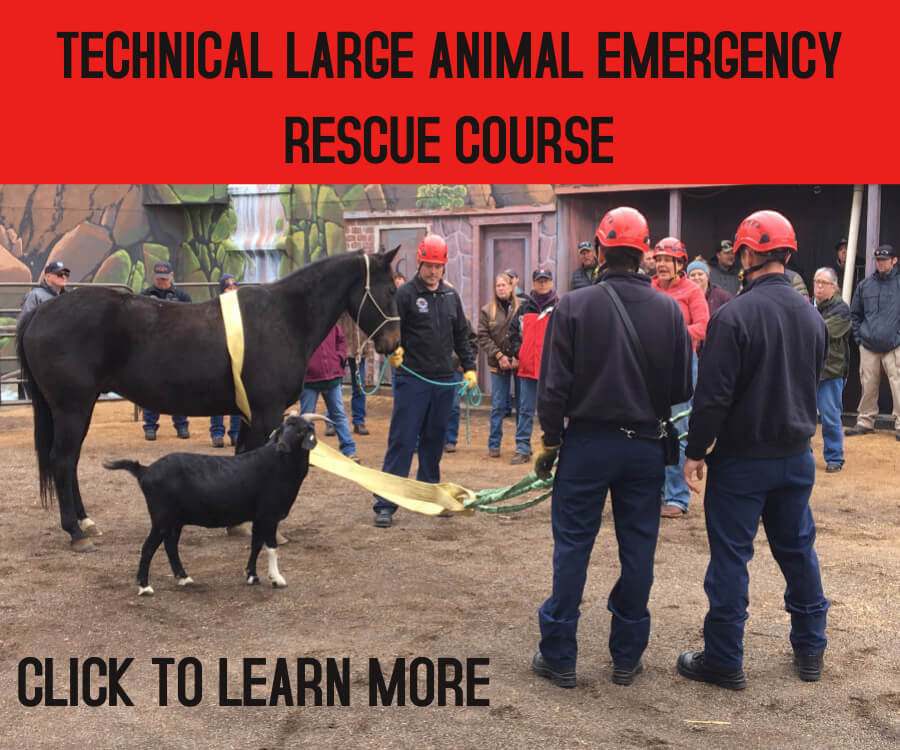Educate Yourself to Save Money and Keep Animals Healthy
A few years ago I ordered a load of teff hay for my metabolic horse. The seller had posted photos and analysis on social media, and though it was expensive—nearly $600 per ton delivered and stacked—it looked like a good product for my horse. When the hay arrived, the crew began to unload and stack it and I opened a bale to check it out.
Upon inspection I noticed there was a significant amount of fully headed-out bearded wheat mixed into the teff. I halted the unloading process. I pointed out the wheat to the hay seller, who said I was looking at teff seeds. Now, I know my grasses, and teff and wheat look nothing alike. I was stunned and a bit irate. Not only can bearded wheat get lodged in the mouth and throat of horses, but wheat is notoriously high in starch. I told him I would only pay for the hay he’d already unloaded (about a ton) and his fuel and time, which was still a major hit to my pocketbook. First lesson: purchase hay from a reputable seller.
Hay keeps getting more expensive, and good-quality hay can be difficult to find. Most horses eat about 3 tons a year. Medium-quality timothy and orchard grass are currently running around $450 per ton. Expect to pay more if you purchase from your local feed store. When purchasing large quantities, always inspect hay carefully by opening a few bales before having an entire truckload unloaded and stacked. Once it’s in your barn it’s difficult to return.
Horse people with a reliable hay source should count themselves lucky. It’s unlikely hay prices will go down in the future, so we must educate ourselves to make good purchases. Buying hay that ultimately ends up in the manure pile is immensely wasteful and frustrating. Here are some more lessons about hay I’ve learned over many decades as the owner of an equine facility.
Be Aware

Always look closely at everything you feed. Even the highest quality hay has the occasional bad thing hiding in it. Remove twine immediately after opening bales and keep an eye out for bits of errant string. Hay grown in fields near roads might have garbage hidden in the flakes, and if your horse turns up their nose at what you’ve fed, take note, as carcasses of animals inadvertently baled into the hay may be hidden there and should be removed immediately. I’ve found entire (dead and rotten) rattlesnakes in my hay, not to mention the occasional rodent.
Horse hay should be free of dust, mold, dirt, rocks, and weeds. It should be green and relatively leafy, though some stem gives healthy horses with good teeth something to chew on and needed fiber. It shouldn’t be full of “brown leaf” which results from hay that’s had too much nitrogen put on it. Overly-fine hay that was cut too early may give horses diarrhea. High-quality, palatable hay smells good and fluffs up easily. The flakes break apart “just right” and it’s easy to feed.
Test, Don’t Guess
If you know what’s in your hay, you’ll know your horses are getting the nutrition they need. Fortunately, it’s becoming more typical for farmers and retailers to offer a product with a nutritional analysis. This is very helpful when purchasing hay. One forage won’t fit all horses, and having an analysis helps you know what kind of supplementation you need. Metabolic, obese, thin, high-performance, pasture pets, breeding, and growing horses all need different nutrition. Check with your veterinarian or an equine nutritionist to help you know what’s best for your horse.
Very generally, horses need about 12% crude protein in their hay. A hay analysis also measures different types of non-structural carbohydrates (NSC) which includes the following: starch, water soluble carbohydrates (WSC), and ethanol soluble carbohydrates (ESC). WSC measures simple sugars and fructans. For horses with metabolic disorders, it’s recommended to keep NSC below 10–12%. You find this number on your analysis by adding together WSC and starch.

Know Grass Species
It’s important to know what’s really in that bale of timothy or orchard grass you purchased. It’s buyer beware when purchasing hay. Consumer protection laws are difficult to find and enforce, and pursuing lawsuits for horses damaged by hay are expensive and the burden of proof is on the owner.
Educate yourself to the appearance of different grass species and how they feed. Timothy, alfalfa, orchard grass, fescue, rye, teff, bluegrass, and a myriad of native grasses all offer something different to our horses. Timothy and orchard grass are popular “cool season” grasses for horses for a reason. They tend to be palatable with good protein, sugar, and starch levels, though much depends on how the hay is grown and harvested. Most horses eat perennial ryegrass well, but it can be very high in NSC (non-structural carbohydrates) making it dangerous for metabolic horses. Endophyte-infected tall fescue causes reproductive issues in mares. Teff and alfalfa tend to be lower NSC, but the only way to know for sure is to have the hay tested. Don’t assume all teff is low NSC.
Identify Weeds
The list of weeds commonly found in hay grown in Washington and Oregon is extensive. There are good resources online, including this booklet which can be downloaded from Washington State Noxious Weed Control Board’s website, www.nwcb.wa.gov. If you find a plant in your hay that you aren’t sure about, remove it and get it identified.
Some of the more common weeds I’ve found in hay include buttercup (not toxic in hay but reduces palatability); barnyard grass (also called watergrass) which isn’t toxic but is very unpalatable and will spread throughout your barnyard; canary grass (not toxic but reduced palatability can cause digestive problems and impactions); fox tail and cheatgrass (not toxic but can cause serious problems to a horse’s mouth, throat, and digestive tract).
Toxic weeds include horsetail, pigweed, bracken fern, lupine, thistle, blackberry, vetch, and many more.
Horses need constant access to forage to allow them chewing time. This helps alleviate boredom, keeps their digestive system functioning correctly (reducing the chance of ulcers and colic), and helps regulate their hormones. The cost of hay and delivery has become one of the most expensive aspects of horse ownership. Arm yourself with knowledge to make the most of your hay purchasing dollar.
See this article in the May 2024 online edition:
May 2024

Kim Roe grew up riding on the family ranch and competed in Western rail classes, trail horse, reining, working cow, and hunter/jumper. She trained her first horse for money at 12 years old, starting a pony for a neighbor.
Kim has been a professional dressage instructor in Washington state for over 30 years, training hundreds of horses and students through the levels. In recent years Kim has become involved in Working Equitation and is a small ‘r’ Working Equitation judge with WE United.
Kim is the editor of the Northwest Horse Source Magazine, and also a writer, photographer, and poet. She owns and manages Blue Gate Farm in Deming, Washington where she continues to be passionate about helping horses and riders in many disciplines.




